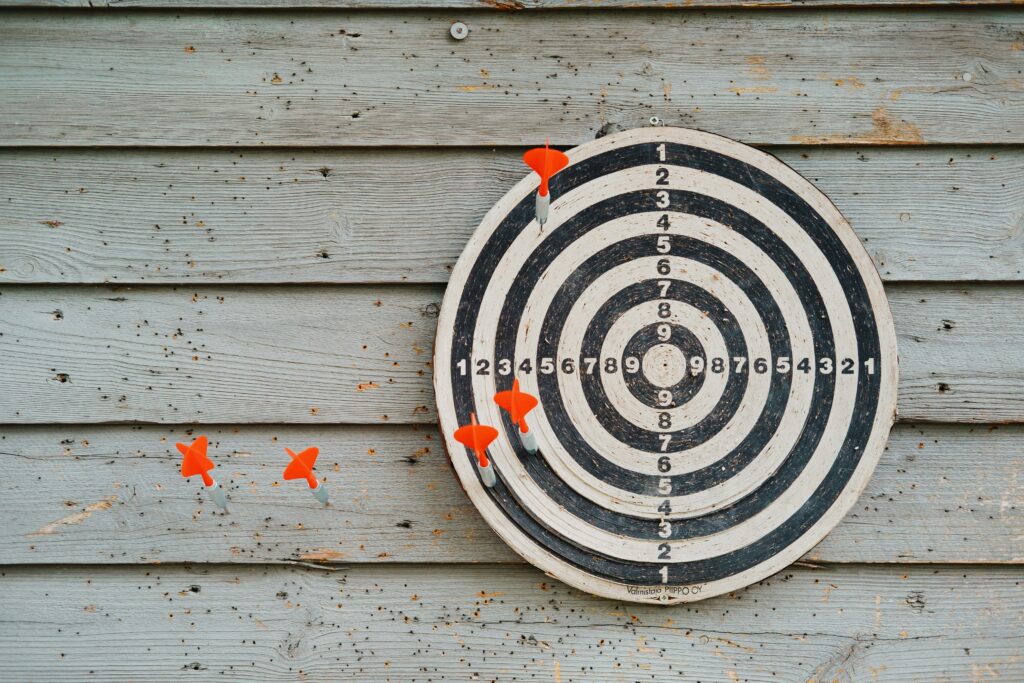Effective Techniques to Document and Track Bugs in Game Development
In “Effective Techniques to Document and Track Bugs in Game Development,” we delve into the critical process of managing bugs to ensure a smooth and enjoyable gaming experience. Together, we explore streamlined methods and handy tools that help us identify, document, and monitor bugs in our game projects. From establishing clear communication channels within our team to using bug-tracking software efficiently, we uncover strategies that enhance our workflow and keep our development cycles organized. By implementing these techniques, we can tackle issues head-on and consistently deliver high-quality games. Have you ever wondered how to document and track bugs effectively in game development? We sure have! In the ever-evolving world of game development, it’s crucial to keep a close eye on bugs and efficiently manage them. Let’s dive into the best practices and techniques that can help us ensure a smoother process and create amazing games.
Introduction
Before we delve into the techniques, let’s understand why bug tracking and documentation are vital. Bugs can deteriorate user experience and tarnish the reputation of a game. Efficient bug management ensures that the development team can systematically address issues, thereby safeguarding the quality and playability of the game.
The Importance of Bug Tracking
Why Track Bugs?
Tracking bugs is not just about fixing problems; it’s about understanding them. By documenting bugs, we can find common patterns, identify problematic areas, and forecast potential issues.
Benefits of Effective Bug Tracking
- Improved Communication: It ensures that the entire team is aware of issues and their resolutions.
- Enhanced Productivity: Developers can prioritize tasks and manage their time effectively.
- Quality Assurance: Thorough documentation allows for comprehensive testing, ensuring fewer bugs post-release.

Techniques for Documenting Bugs
Clear and Detailed Descriptions
A well-documented bug starts with a clear and detailed description. Specify what the bug is, how it occurs, and its impact on the game.
Example of a Good Bug Description:
- Title: Character glitches through walls when sprinting.
- Description: When the player sprints towards the wall, the character glitches and moves through the wall instead of stopping.
- Steps to Reproduce:
- Open the game.
- Select ‘Character A’.
- Sprint towards the north wall.
- Expected Result: Character should stop upon hitting the wall.
- Actual Result: Character moves through the wall.
- Game Version: v1.2.0
- Severity: High
Categorization of Bugs
Classifying bugs into categories helps in easier identification and assignment. This can be done based on severity, type, and area of the game affected.
| Category | Description |
|---|---|
| UI/UX | Issues related to user interface and user experience |
| Gameplay | Bugs affecting the core mechanics and experience of the game |
| Audio | Problems related to sound effects, music, etc. |
| Graphics | Issues concerning visuals, textures, and animations |
| Performance | Bugs affecting the game’s performance |
Providing Context
Adding context ensures that anyone reading the bug report can understand the environment in which it was found. This includes device specifications, operating systems, and any additional conditions.
Example Context Information:
- Device: PlayStation 5
- Operating System: v8.00
- Additional Conditions: Occurs only in multiplayer mode
Techniques for Tracking Bugs
Using Bug Tracking Software
Dedicated bug tracking tools provide a structured way to manage bugs. Some popular tools include JIRA, Bugzilla, and Trello. These tools allow for status updates, prioritization, and better collaboration.
Assigning Bugs
Assigning bugs to specific team members helps in tracking who’s responsible for fixing the issue. It also facilitates clearer communication.
Prioritizing Bugs
Not all bugs are created equal. Some impact gameplay significantly, while others may be minor visual glitches. Prioritization helps in managing resources efficiently and resolving critical issues first.
| Priority Level | Description |
|---|---|
| Critical | Game-breaking bugs that need immediate attention |
| High | Major bugs that affect gameplay |
| Medium | Moderately impactful bugs |
| Low | Minor glitches that do not affect gameplay |
Status Updates
Keeping everyone updated with the status of bugs is crucial for transparency. This includes stages such as ‘Reported’, ‘In Progress’, ‘Resolved’, and ‘Closed’.
| Status | Description |
|---|---|
| Reported | New issue logged and awaiting review |
| In Progress | Issue is being worked on by a developer |
| Resolved | Issue has been fixed but not yet verified |
| Closed | Issue has been fixed and verified |

Best Practices for Bug Documentation & Tracking
Consistency is Key
Ensure that all team members follow a consistent format for bug reporting. This includes using templates and predefined categories.
Regular Reviews
Conduct regular review meetings to discuss bug statuses, prioritize tasks, and allocate resources.
Encourage Collaboration
Promote collaboration between developers, testers, and other team members. Tools with commenting features can facilitate discussions around specific bugs.
Keep Documentation Updated
Regularly update bug reports and ensure that resolved bugs are closed and documented properly. This helps in historical analysis and future reference.
Tools and Software for Bug Tracking
JIRA
JIRA is a powerful project management tool that is widely used for bug tracking. It offers numerous features such as customizable workflows, advanced reporting, and integration with other tools.
- Pros: Highly customizable, detailed reporting, strong support.
- Cons: Can be complex for beginners, relatively expensive.
Bugzilla
Bugzilla is an open-source issue tracking system that is both robust and flexible. It’s widely used by both small teams and large corporations.
- Pros: Free and open-source, customizable, powerful search capabilities.
- Cons: Outdated UI, can be intimidating for new users.
Trello
Trello is a simpler, more visual tool for tracking bugs and tasks. It utilizes a card and board system, making it straightforward and approachable.
- Pros: User-friendly, highly visual, free basic version.
- Cons: Limited advanced features, less suitable for large projects.
Asana
Asana is a versatile project management tool that also includes features for bug tracking. Its intuitive interface and task management capabilities are highly praised.
- Pros: User-friendly, versatile, strong collaboration features.
- Cons: Limited customization, can be expensive for larger teams.
Mantis Bug Tracker
MantisBT is another open-source bug tracking tool that is simple and effective. It offers essential functionalities and is relatively easy to use.
- Pros: Free and open-source, straightforward, good for small teams.
- Cons: Limited features compared to more advanced tools, basic UI.

Steps to Implement Effective Bug Tracking
Step 1: Choose the Right Tool
Select a bug tracking tool that fits the needs and scale of your project. Consider factors like team size, complexity, and budget.
Step 2: Define Workflow
Establish a clear workflow for bug reporting, tracking, and resolution. This includes setting statuses, categorization, and prioritization protocols.
Step 3: Train the Team
Ensure that every team member understands how to use the chosen bug tracking tool and follows the standardized reporting format.
Step 4: Regular Updates
Monitor the bug tracking system regularly and ensure that statuses are updated consistently. This helps in maintaining clarity and efficiency.
Step 5: Review and Retrospect
After significant milestones, review the bug tracking process. Identify any gaps and make improvements to enhance future tracking.
Analytical Techniques to Gain Insights from Bug Data
Bug Trend Analysis
Monitor and analyze trends in bug occurrences to identify persistent issues. This helps in understanding whether the number of bugs is increasing or decreasing over time.
Root Cause Analysis
Investigate the root cause of frequently occurring bugs. Identifying these root causes can lead to more targeted and effective fixes.
Impact Analysis
Assess the impact of certain bugs on the overall game experience. This can help in better prioritizing which bugs need immediate attention.
Bug Density Analysis
Determine the density of bugs in various modules or features of the game. Higher bug density in certain areas can indicate problematic sections that may require a code refactor.
Future of Bug Tracking in Game Development
AI and Machine Learning
Artificial Intelligence and machine learning can be leveraged to predict potential bug-prone areas. These technologies can also assist in automating bug tracking and resolution processes.
Enhanced Collaboration Tools
As remote work becomes more prevalent, collaboration tools will become more advanced, offering real-time communication and integration with bug tracking systems.
Advanced Analytics
Improved analytical tools will provide deeper insights into bug tracking data, helping teams make more informed decisions.
Conclusion
In game development, meticulous bug tracking and documentation are imperative to deliver a seamless user experience. By employing the techniques and tools we’ve discussed, we can ensure systematic and effective bug management, leading to the creation of polished and engaging games. Let’s strive to adopt best practices, embrace new technologies, and continuously improve our processes. Happy game developing!



